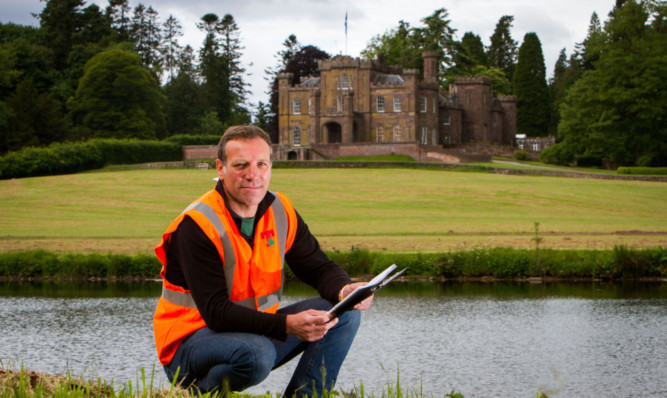The man responsible for safeguarding wildlife at T in the Park’s new home has tweaked the site lay-out including moving the main stage in a bid to protect the site’s nesting ospreys.
Steve Taylor, the festival’s award-winning environmental manager, said the birds and their two chicks are doing well and are being given the ultimate protection.
Mr Taylor has worked with the festival since 1997 and has been charge of all of its environmental matters since 2008. Under his stewardship, T in the Park has secured Greener Festival accolades for seven years running.
He said this year’s osprey protection plan is working well. “We have adjusted two things,” he said. “Firstly, the construction timetable and, secondly, the lay-out of the site.
“The reason for that is that the ospreys become more sensitive at certain periods of time, such as when their eggs are hatching,” he said.
“Once the chicks have their feathers and they can leave the nest, we can make a bit more noise and be more relaxed. But, at the moment, we are being very sensitive and have adjusted the construction schedule so that noisy activities are not taking place in the zone closest to the osprey’s nest.
“Obviously, the construction people just want to get in and work but they have all agreed they will work within that remit. We’ve also moved the main stage and reoriented it, which is a major contribution to the osprey protection plan. Now it has moved further away, it is well away from the buffer zone.”
Mr Taylor, who worked as sustainability manager at the Commonwealth Games, said: “We knew the eggs had hatched when our ornithologist pointed out that, every day, the male would come with a fish and eat half and then give the other half to the female.
“One day, the male ate his half and give the other part to the female, but instead of eating it, she broke it up and dropped it downwards. That’s how we knew the eggs had hatched.
“Since then we’ve seen two chicks. They will be capable of flying off at festival time, so they will certainly be capable of looking after themselves.”
A buffer zone will remain in place during the festival, from July 10-12 .
The ospreys, which sparked a major row when they arrived during the event’s crucial planning application process, are not the only wildlife at Strathallan organisers need to consider.
Mr Taylor added they have minimised the amount of trees to be felled at the site. “Before any tree is touched, we have a bat surveyor carry out a check and if there are any signs of bats then we will simply alter our route that’s quite exceptional,” he said.
“I don’t think there are many other festivals which take protection as seriously as that.”
